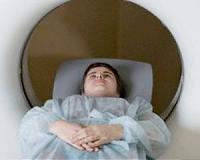 |
Tokyo (AFP) May 23, 2011 Furious parents at the centre of Japan's atomic crisis and hundreds of their supporters rallied in Tokyo Monday against revised nuclear safety standards in schools they say are putting children at risk. Japanese children can now be exposed to 20 times the radiation that was permissible before the March 11 tsunami caused a meltdown at the Fukushima nuclear plant, sparking the world's worst nuclear crisis since Chernobyl. Around 400 protesters, many from areas around the stricken plant, flocked to the education and science ministry to demand a rethink on the new limit, which allows exposure of up to 20 millisieverts a year. A group of Fukushima residents submitted a letter for the education minister demanding the ministry do all it can to lower radiation levels at schools and offer financial support. Protest organisers said the radiation limit for playgrounds was about six times as much as the 0.6 microsievert-per-hour legal maximum under which under-18s are allowed to work. Demonstrators brandished banners emblazoned with slogans such as "Protect children in Fukushima from radiation" and chanted: "Why is it 20 millisieverts? Come out minister!" Ministers have defended the increase in the acceptable safety level as a necessary measure to guarantee the education of thousands of children in Fukushima prefecture. Science minister Yoshiaki Takaki had earlier told a parliamentary session: "We are always thinking that we should never underestimate the risk of radiation." "Efforts have to be made in order to avoid radiation as much as possible," he said. But the demonstrators were not placated. "This is enough. I'm really furious to see the government has no intention of protecting its people," said Ruiko Muto, 57, who had journeyed from Miharu town, about 45 kilometres (28 miles) from the crippled plant. "We are making the demand in order to protect children, as Fukushima's education authorities are following the guidelines and saying outside activities can be safe." The nuclear crisis remains unresolved and tens of thousands of people are still unable to return to homes, farms and businesses in a 20-kilometre zone around the radiation-spewing plant. More than 20 elementary and junior high schools within 30 kilometres have been forced to close since the accident, affecting some 5,000 pupils, the Yomiuri daily newspaper reported on Monday.
Share This Article With Planet Earth
Related Links Space Technology News - Applications and Research
 Lessening the Dangers of Radiation
Lessening the Dangers of RadiationTel Aviv, Israel (SPX) May 13, 2011 For diagnosing head and neck ailments, tests that use radiation are always less desirable than those that don't. Otolaryngologists have a wide range of techniques available to them, including CT or "CAT" scans, MRI and ultrasound. CT uses significant radiation and MRI a lower amount, but ultrasound is a non-invasive, non-radiating technique. It does not require injection of radioactive con ... read more |
|
| The content herein, unless otherwise known to be public domain, are Copyright 1995-2010 - SpaceDaily. AFP and UPI Wire Stories are copyright Agence France-Presse and United Press International. ESA Portal Reports are copyright European Space Agency. All NASA sourced material is public domain. Additional copyrights may apply in whole or part to other bona fide parties. Advertising does not imply endorsement,agreement or approval of any opinions, statements or information provided by SpaceDaily on any Web page published or hosted by SpaceDaily. Privacy Statement |